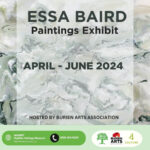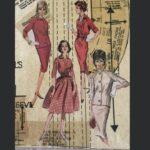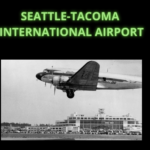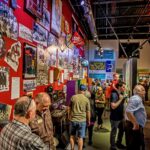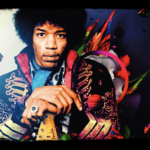Ralph Myers • Burien, Washington • December, 1994
Some years ago I spent eight weeks working in the undeveloped interior of China. This is the story of my travels and the life experiences I encountered during that period. I have also tried to describe some of the problems one encounters when he/she works in the primitive area of a third world country. The Cultural Revolution had recently ended and the Chinese people were beginning to modernize the country. The tourist business had started but the Western World amenities that existed were still quite rudimentary and limited to a few cities on the coast. I had many wonderful adventures, which no amount of money could purchase.
In 1983, the Boeing Company, in an effort to sell a fleet of airplanes to the Chinese, committed themselves to subcontracting parts production to China in return for sales. The designated aircraft plant was the Xian Aircraft Factory located in Yan Liang about 50 miles north of Xian, Shaanxi Province. Xian, a large city, is about 800 miles southwest of Beijing (Peking).
Boeing did not know whether Xian Aircraft could manufacture parts to Boeing’s standards and, if not, whether the company’s manufacturing capabilities could be brought up to standard. A small team was assembled and instructed to go to China and evaluate the situation. The team consisted of myself as the engineering representative, John Roalkvam representing manufacturing, Ted Sakuma for Tooling and Charles Drdla as the Quality Control representative. We were told to evaluate the company’s existing engineering and manufacturing capabilities and then help them to reach the necessary quality level. We were also to study the potential logistic problems involved in supplying Xian with the necessary materials needed to manufacture parts and assemblies. Since Boeing would be required to station personnel at the site for an indefinite period to monitor production and to help the Chinese develop Western production techniques, were also required to assess the problems involved in supporting these people with food, lodging, health services, leisure activities, etc. This was to be an interesting challenge.
We left Seattle on October 13 and proceeded to Beijing where we were met by several officials from the Chinese aviation production group, our escorts during our stay in China. They told us it would be several days before we would be able to travel inland. We were not tourists with a tour group and we could not stay in one of the very few western type hotels. Arrangements had been made to allow us to stay at the Chinese Institute of Aeronautics and Astronautics located in the university district. This sounded like a wonderful idea until we arrived.
The club turned out to be an elderly, 2-story stucco building, sitting between numerous large unkempt dormitories all of which were guarded by heavily armed red army infantry. We gingerly entered our quarters and found the interior to be as unappetizing as the exterior. The interior still had it original 1920’s finish -brown varnished wainscoting and floors with whitewashed walls. Each guest room was about eight by ten and contained a wooden cot, a straight backed chair, and a small wooden desk equipped with some waxy writing paper, a bottle of black ink, a wooden penholder and two pen points. We were told that the club did not serve meals so we would eat at the nearby student cafeteria.
Since our quarters at the prestigious club turned out to be rather rudimentary, we decided that we should immediately check out the area. None of us could speak any Chinese but we, being men of experience, wandered around the campus without our interpreter. The first thing we noticed was the lack of any grass; just dusty bare ground between the buildings. We thought it was a strange looking college campus! The multi-story brick dormitories were badly in need of paint and had many broken windows. The place was crowded with students and bicycles interspersed with soldiers with mounted bayonets. We found the cafeteria to be a very large hall with unpainted concrete floors and whitewashed walls. The unpainted trestle tables and benches apparently had not been cleaned for days. We decided we would pass up the cafeteria food and eat in the local restaurants.
We were in trouble! When our interpreter returned later in the day we told him that we did not think we would eat at the University and would instead use local restaurants. He informed us that the local ones were worse than the university cafeteria, that the closest western style restaurant was at least 12 miles away, and we were without transportation.
In spite of the unsanitary conditions, the food wasn’t that bad. The students lined up in long queues with their tin plates in hand to have their food thrown onto their plates but we were escorted to a segregated area where we were served. We were beginning to learn that the Chinese know how the Westerner lives and try to accommodate him. The food was very simple with lots of rice, goat meat, dumplings, noodles, etc. We learned there are several grades of rice and that the students, military, and commoners are served peasant rice, which is much coarser than that to which we are accustomed. The tourists who go to China are served with a higher grade rice than that served to the locals. Since we were not tourists, we were given the coarse rice wherever we traveled.
We very quickly noticed that, while our surroundings were not enticing, the people with whom we dealt were very kind and always did their best to ensure our safety and comfort. Many of them had been to the Western world and knew what changes we were experiencing in the areas of food and living accommodations.
I discovered the plumbing facilities in the club were rather worn and inadequate. The toilet tank plug had to be reset by hand after each flushing. The shower had no shower head on the end of a very small diameter pipe creating difficulties in bathing oneself. Since no hot water faucet existed at the lavatory, it was necessary to transport hot water from the shower by means of a drinking glass. I also discovered to my surprise that the Chinese do not use sheets or pillows on the beds-only thick eiderdown quilts. The mattresses were enclosed in a muslin sack like affair.
The second morning at the club I was awakened at 6 A.M. by the sounds of a bugler playing reveille directly outside the building. A few minutes later, hearing noises outside, I looked out of my window and was astounded to see hundreds of soldiers and students engaged in morning calisthenics. This was to be my morning wake up call throughout my stay in China.
It was a dismal rainy morning and, as we walked to the cafeteria, we found that the rain had turned the dusty bare ground into mud. Dress shoes were definitely not appropriate attire. Breakfast was a disaster. It consisted of a large bowl of rice gruel, similar to porridge but tasting like bad medicine, a mantoe bun, which is similar to a steamed dumpling, and a cup of tea in which the tea leaves floated on the surface. When I asked for some milk for my tea and butter for my bun I was horrified to learn that the Chinese to not use dairy products such as butter or milk nor even margarine. I was somewhat relieved when I was told that jam is usually available.
Since we were unable to travel inland for several days, the Chinese arranged for us to be entertained in the interim. There were very few taxis in China at that time, so we were assigned a government staff car and a driver to take us around the city. Of course, we also had an interpreter guide to show us where to go and to explain things to us. The car was a typical Chinese car made from old Russian tooling. It closely resembled a 1953 Chevrolet and had lace curtains in all of the rear windows. At that time most of the sedans seen on the roads were of the same manufacture. All were official government cars since no privately owned vehicles existed.
Our first day was spent on a tour of the Great Wall, a two hour drive into the mountains. The clouds had dissipated by this time but the pollution was worse than that which I have observed in Mexico City. We did not know we were headed towards mountains until we were suddenly within them. We visited a restored section of the wall and were impressed with its construction. It was build of stone blocks, is 25-30 ft. tall, 15 ft. wide and has a roadway between the two exterior parapets. The soldiers would have been able to defend themselves against an attack from either side. Most of the 2500 mile length of wall is in ruins, yet can still be seen from space.
On the way back to the city, we stopped at the Ming tomb site. Emperor Ming, the founder of the Ming dynasty, was buried there about 600 years ago. The tomb is approached by driving or walking down a long road lined on either side with many full sized carved stone animals positioned to guard the tomb. They were an impressive sight. Lions, camels, elephants, horses and two sets of mythical beasts line each side of the road, alternately standing and kneeling. We went down into the tomb, now just an underground stone block shell containing the casket, all treasures having previously been removed.
The next day was very wet and rainy. The guide took us into the city to the Friendship Hotel, a dour stone edifice built by the Russians, where we were treated to a western style breakfast. I was also able to exchange some of my dollars for Chinese yuan at the hotel. We were then escorted to the Forbidden City, the opulent walled palace of the emperors, for the grand tour. The Forbidden City is an immense place taking several hours to traverse. Unfortunately, the Chinese had not kept up with maintenance for many years, so the buildings were badly in need of paint and general repairs. The city, or palace, includes many buildings and covers a very large area. Since the spaces between buildings were not paved we encountered many muddy areas. We saw many marvelous things including beautiful jade and stone carvings, gold and silver artifacts and wall panels, and large bronze castings of animals. I was particularly impressed with the quality of the gorgeous bronze castings.
Before returning to our quarters we were taken to the Beijing Zoo to see the panda bears. The zoo was an absolute sea of mud and we almost ruined our shoes before getting back to our car. We finally asked our interpreter why there was no grass in any of the parks, the university common areas, or even in the Forbidden City. It was explained that grass was considered to be a bourgeois taste and it was all removed during the Cultural Revolution.
The third day we visited the Emperor’s Summer Palace, a 700-acre estate where the Imperial court spent the summer months. It is located several miles from the city. The area around Beijing is flat. The emperor had a large hole dug with the dirt piled up beside the hole. He now had the makings of a lake beside a small mountain. He built his palace, consisting of about 300 buildings, on the side of the mountain overlooking the half-mile wide lake. The area surrounding the lake was completely landscaped. He wanted a boat for his lake so the workers built a very ornate two-storied marble vessel. Unfortunately it wouldn’t float so was permanently beached.
Our final visit was to Tianamin Square in the center of the city. It is next to the wall surrounding the Forbidden City and covers a vast area. We were told that one million people could gather there at one time. In the center is a monument honoring the people killed in the fighting against the warlords and foreign powers. Sadly it is also the place where hundreds of student protesters were massacred in 1989. I am sure there is no monument to commemorate that terrible event. To one side of the square is the large hall in which Mao Tse Tung is buried. On another side is the Great Hall of the People where the communist delegates gather for their annual meetings and in which the state banquets are held. The National Museum, which we visited, is opposite the great hall. This museum has some very old (3000-5000 years) artifacts. We saw several intricate wooden geared machines, which had been used to run machinery of various types. Since most of the museums’ good pieces seem to have been collected in recent years I presume that the British, French, Americans, etc. who exploited China for over a century took those that had been found up until that time. We certainly have many Chinese treasures in America, some of which are here in the Seattle Art Museum.
The time had finally come when we were to go inland. We were taken to the airport to leave for Xian, the closest city to our destination. I found it rather disturbing to have an armed soldier check my passport and travel permit before I could pass through the boarding gate and then have another standing at the bottom of the airplane loading ladder repeat the process. I was slightly upset when I discovered that half of my seat belt strapping was missing but later found that the Chinese don’t worry about minor things such as inoperable seat belts. They had bigger problems to worry about.
We arrived at the Xian airport at dusk and were met by a new group of escorts with two staff cars, clones of the ones we used in Beijing. Since we had a two -hour drive to Yan Liang we left immediately for our final destination without taking time to visit in Xian. It was only a 50-mile journey but, when we saw the condition of the rural roads, we realized why it was such a long ride. We had an amazing ride through the countryside. The driver used no headlights to light his way. We drove in total darkness except for when he would momentarily flash his lights to check the road ahead. When we would come over the brow of a hill we could see the lights of a few oncoming vehicles flashing in the distance. Whenever he did turn on the lights we would get a photo flash glimpse of a country road lined with people walking, riding bicycles, pulling wagons, or pushing wheelbarrows loaded with produce. We were told that if the driver drove with his lights on he would momentarily blind the oncoming drivers and thereby endanger the lives of those people. The dim outlines of heavy trucks could be seen as they rumbled past us going in the opposite direction, giving me a feeling of familiarity as I recalled my days in Europe during World War 2 when we traveled in a similar manner using only pin point marker lights.
About half way to our destination the driver suddenly came to a stop and we were startled to have powerful flashlights lighting up the interior of the car. It was the army again. They were manning a roadblock. Needless to say we had to produce all of our travel permits and passports for their perusal. We were very glad to arrive at our final destination without any additional surprises.
Yan Liang is a town of 10-15000 people that was built in the 1950’s to support the aircraft factory we were to evaluate. After the Chinese Communists took control of the country in 1949 the Russians helped them build a domestic defense industry and provide assistance with other programs. Since defense plants were to be built as far from potential enemy interference as possible, this plant was build amongst the farmlands away from the big cities.
The Russians were to monitor the plant operations, so a small fenced off compound was built to house the Russian technical support people. It consisted of twelve cottages, a community hall and a small two-story office building all of which were built of brick. Sometime later the Chinese and Russians had a major dispute resulting in the departure of all the Russians. The compound was then used by the Chinese air force to house the test and production flight crews who flew the aircraft developed and produced at the factory. Six Chinese were assigned to each cottage. Arrangements were made for us to live in the compound by increasing the number of Chinese per cottage to nine. This allowed us to each be given a cottage whereas the air force people were crowded into the others. The old community hall had been turned into an air force mess where we were served our meals. As in Beijing, we were seated at our own table and segregated from the air force personnel. We were given office space in the office building.
My cottage, where I was to live for the next two months, had a small living room containing an overstuffed easy chair, a coffee table, a very small refrigerator, and a floor lamp. It also included two small bedrooms with double beds and rudimentary desks complete with inkwells and pens similar to the ones encountered in Beijing. A bathroom with a huge bathtub was also provided. Unfortunately, because of low water pressure, a 20-minute time period was needed to draw enough water to bathe. Since hot water was available for only two hours each evening bath times were rigidly adhered to. The 12 ft. walls were painted a bilious green and each room had a ceiling fixture containing one 60-watt bulb.
The cottages were equipped with window heating units similar to the air conditioning units found here in America. We were privileged since the Chinese towns people had no heat of any kind. We didn’t either, except when we were in our cottages! The Chinese had a coal shortage so no heat was to be provided in Shaanxi Province until the end of the year. The weather was bitterly cold but fortunately we had brought long underwear, heavy wool socks and boots, winter parkas and warm headgear. We wore them whenever we left our quarters, even in the mess hall while eating.
The first day we were given a complete tour of the factory. It comprised many small buildings spread out over a large area. I presume this was to help protect it from serious damage if it were to be subjected to enemy attack. The buildings were of sturdy brick construction but had not been properly maintained for several years. Many windows were broken or missing thereby allowing birds to nest in the ceiling areas. A fire protection system had been provided but was not functional. The fire hoses were neatly stacked in the hose racks but were completely rotted through at the crease lines. The large chemical extinguishers, originally red in color, were now coated with rust. Much of the machinery was rough looking and in need of paint. We were told that the Russians had removed all the machinery and buried it out in the fields before they left China. The Chinese had dug the machines up and moved them back into the plant. While most of the machinery was of the 1920-40-era design, some modern equipment had recently been purchased.
The plant lighting system was quite inadequate. One day I was attempting to measure a machine part at a precision inspection booth but could not read my scale. I asked the Chinese inspector, through my interpreter, how he could possibly determine the correct measurement. “Easy” he said as he tilted the scale towards the light shining down from a very dirty overhead window. The next day I borrowed a light meter to read the light intensity at the inspection area. It read 25 candlepower whereas the minimum industry standard is 100 candlepower.
The company was building Chinese bombers at the time so we followed the manufacturing and assembly path through the factory watching the airplanes being constructed. I was surprised to see that many standard parts such as bolts were being manufactured in the plant. The country did not yet have an acceptable supplier system. We finally reached the end of the assembly line and saw a finished bomber ready to be flight tested.
I was awe struck! The airplane resembled a 1940’s bomber with two jet engines build into the fuselage at the wing roots. It had a glass nose to accommodate the bomb aimer and manually controlled mid, upper, and tail machine gun turrets. An airplane such as this would be instantly destroyed if it were intercepted by a modern enemy aircraft. As I approached to have a close look, a Chinese soldier suddenly appeared before me. His facial expression warned me not to come any closer. That was the only time we were allowed to enter this area.
The workers with whom we had contact during our stay were usually very congenial, but we often had difficulty determining which member of a crew was in charge. Since everyone, including the members of senior management, wore the same blue or gray Mao uniform we would usually have to request that the responsible persons identify themselves. Sometimes we would have to be very persistent before we could get someone to step forward. Our interpreter finally told us that many were reluctant to stand out as leaders in case the Cultural Revolution was reactivated and they would be imprisoned. Some work crews rotated their leader on a daily basis to eliminate this problem.
There were no telephones and each office had a runner who would carry messages from one location to another. If I wanted to talk to a quality control supervisor I would send a runner to his office with a message. In a short time the supervisor would return with the runner. A phone room had been installed to provide communication with the airfield and with the outside world. It was a small
room with several chairs next to the wall and a table in the center of the room on which sat a large red telephone.
When we were to make a periodic call to Seattle the four of us would be escorted to this room by several soldiers, our interpreter, and several plant officials. Once we were seated, one of the Chinese would step up to the phone and rigorously crank the magneto handle to alert the operator at the town post office telephone exchange. After conducting several lengthy conversations in Chinese he would call one of us forward and hand him the phone. We would have been connected to Seattle by way of Xian, Beijing, Hong Kong, and Sydney.
The factory was operated six days a week from 8AM until 6PM with a two hour midday break. No food services were provided so all employees went home for lunch. Thursday was the day for resting. We were told that the plant also closed several times each year for special national days when the employees would gather at the sports field for a gigantic rally. Married couples were not given annual vacation, but single people were sent home to visit their parents once a year. Men could not marry until they were 22 years of age nor girls until they were 20.
Yan Liang is the support community for the factory. It had obviously been a village prior to becoming a factory town since some old cottages remained. The main town consisted of numerous clusters of apartment buildings scattered over the countryside together with a small business center. Many trees had been planted between the buildings but, as in Beijing, the grass had been removed. The town also had a sports field with a field house, schools, a hospital, a concrete movie theater in which even the seats were cast concrete benches and a government run food distribution center.
The family housing units were large three story brick buildings containing two room apartments. Each floor had a communal kitchen and a toilet facility. Each cluster of apartment buildings had a central bath house and boiled water source from which the inhabitants obtained their drinking water. The single people lived in dormitories adjacent to the factory and our compound.
The small business area was located in the center of the town where the post office and town bank were located. Numerous small one-story shops, interspersed with small outdoor stalls, lined the street. The town bicycle and shoe repair shops were outside facilities located on street corners. These workers sat on small stools while they worked under the sun, and under umbrellas on rainy days. We were surprised to see a row of women sitting beside the road, with their had powered sewing machines, fitting people with clothes and doing general sewing repairs. They also worked under umbrellas on rainy days.
During the mid day break the street would be lined with farmers hawking their vegetables, live chickens, ducks and geese, dog, goat and pork meat, and eggs. The farmers had a quota of such merchandise, which must be given to the government but could sell the excess to the public. The government sold its share through the food distribution center at a subsidized price, but many workers preferred to buy fresh goods at a higher price. Obviously the farmer sold the best from his wheelbarrow and gave the leftovers to the government. The factory workers are better than us because the air force food came from the government distribution center.
After spending a few weeks in this isolated region of China we began to wonder what would happen to us if we were to become ill so arrangements were made to tour the local medial center. We were met by the hospital director, a burly communist functionary who resembled an old time steel worker. He introduced us to the hospital administrator, an obviously well educated gentleman, and to two female doctors, one of whom was the wife of the chief engineer in the aircraft factory.
The two-story hospital resembled the many apartment buildings but seemed to have had better maintenance. The floors of the passageways and rooms were of unfinished concrete but were scrupulously clean. They were hosed down daily. The concrete walls, as seemed to be the custom, were finished with white wash. The iron beds in the wards were of the design used in America at the beginning of the 20th century and looked as if they had been salvaged from an old missionary run western hospital of that era. Most of the white enamel had chipped off many years previously. The emergency room was equipped with several of these old beds together with some green industrial type oxygen tanks such as one would expect to see in a weld shop. We all agreed not to get sick until we were at least back to Hong Kong!
We soon settled into a set routine. We would be awakened at 6:15 A.M. by the air force bugler followed by the noise of the air force personnel doing their morning exercises. Since we were not allowed to interact with these people during our stay, we did not join with them. After shaving with hot water drawn from a thermos and brushing my teeth with Chinese beer and soap, since the thermos water was not sanitary, I would dress in my winter clothes and proceed to the mess hall.
The standard breakfast consisted of a bowl of rice gruel, two fried eggs soaked in lard grease, a mantoe bun spread with some nondescript jam and a cup of tea with the leaves floating on the surface. I had an interpreter come to the mess hall to tell the cook I wanted my eggs hard-boiled rather than fried. The cook sent word back that he could not honor my request since he had no way of differentiating between good and bad eggs without cracking them. The farmers were giving the oldest eggs to the government and selling the rest.
Our workdays were spent reviewing the work of our Chinese peers and helping them understand the western manufacturing and engineering requirements for building quality aircraft. They had been trained by the Russians some time ago and were unaware of the current requirements. I worked with the engineering department, Ted with the tooling department, John with the operations and manufacturing people and Charles, or Chuck as we called him, with the quality or inspection department. I usually spent by mornings lecturing to groups of engineers. I would enter the lecture hall to find the engineers sitting in their quilted Mao coats waiting patiently for me to start my lecture. The windows would be open allowing the cold winds to whistle past my nose. I would pull my stocking cap over my ears, check the zipper on my coat, greet them with my morning “Nee How Ma”, meaning good morning, and tell the interpreter that we were ready to go to work. The next 4 hours would be spent lecturing, with the aid of my interpreter, on various aspects of engineering theory and procedures.
At the noon break the workers would go home for two hours and we would go to the air force mess hall for lunch. The lunch consisted of cabbage, leafy greens, and or bamboo shoots mixed with meats of dubious quality, a bowl of rice, another mantoe bun with jam and a cup of tea. We then made our daily trip to the town center to observe the community business activities and to mail our letters. The Chinese stamps had no glue on the back. The post office provided two open paste pots with sticks that were used by the locals to attach stamps to their mail. We were privileged in that we had bottles of glue and could apply our stamps before going to the post office.
The noon walk ended outside the factory gate from where we could observe the returning workers. More than a thousand bicycles passed through the gate each day. The constant loud humming sound came from the hundreds of bicycle tires running on the road. All the workers apparently had access to a bicycle. Some were quite new but others resembled old rusted out American cars. The bicycles pass through many hands before being scrapped. The senior executives, doctors, and the high governmental officials obtained a new bicycle each year. The engineers got a new one every five years. The local farm workers seemed to be the last owners before they were finally scrapped. The repair shops were busy places. Parts such as one rubber pad on a pedal or one spring on a seat assembly were routinely replaced. All bicycles were issued license plates similar to automobile plates and were equipped with an excellent locking device. Bicycles in China do get stolen! China has many manufacturers, so I asked whether some were better than others. Four brands were considered to be the most popular and had the highest resale value.
Afternoons were spent in the factory and in meetings helping the Chinese to incorporate our suggested changes. The workday ended with the workers hurrying home in the darkness of the fall evening and we four Americans returning to our compound where the exit gates would be locked until morning.
The evening meals were similar to those served at noon except for the addition of a bowl of noodles, a bowl of soup, and alternately with chicken or carp fish as an entrée. The carp and the chicken were put on unpainted wooden boards and chopped into small pieces with a meat clever. The chicken has its head and feet amongst the chopped pieces and the carp pieces were riddled with bone segments. The long noodles were served with no sauces or other adulterant. The soup was the water in which the noodles had been cooked.
The evenings were lonely since there was little to occupy our time. The lights in the cottage were inadequate to allow for much reading although paperback books had been brought along. The daily quota of hot water was available so lengthy baths were taken. The window heater usually worked so one could keep warm.
All newspapers were printed in Chinese, which I could not read, and radio reception was totally Chinese. John was the envy of the compound because he had brought a Walkman and several cassettes with him. He could not share his music, however, since he only had one set of earphones. None of us had thought to bring a short wave radio so we were isolated with respect to the outside world. Our interpreters understood our problem and passed on any news that they considered of importance.
We had no contact with our Chinese counterparts outside of the workplace. This was a major disappointment since I had hoped to become better acquainted with them. Then obviously were well educated and it would have been wonderful if I could have spent some social time with them. I suppose that they were very busy with personal affairs during the limited time away from work. After all they did not get home until late in the evening and only had one day a week to themselves. I also suspect that they had been warned not to socialize with us.
Thursday was the factory day of rest and our day for sight seeing. We were given two staff cars, our interpreter, and a company staff member who acted as a combination guide and travel arranger. We later learned that the guide was actually a communist functionary assigned to watch over us when we were away from Yan Liang. At that time only four staff cars were in Yan Liang. Three were assigned to the factory and one to the airfield. We were fortunate to be given two each Thursday.
Some weeks we went to Xian for the day. We would visit the Friendship store,
which was reserved for the occasional Westerner who visited town. Chinese were not allowed entrance. We could purchase souvenirs, Chinese artwork, cases of coca cola, boxes of cookies and candy. This was our only source for western style food during our stay in the country. Many hours were spent exploring the back streets of the city. The local historical places were closely examined. I was not on a tour schedule so was able to spend as much time at each site as I desired. Xian is a very old city. It was the eastern end of the Great Silk Road, traveled for centuries by the Arab and Persian traders. The Muslim religion was brought into the area with the traders and to this day many of the local Chinese are Muslims.
Many Chinese would work on the sidewalks rather than in their shops. I often watched carpenters, weavers, tinsmiths, repairmen, and others while they worked. One day I was watching one making baskets. He was sitting on a little stool while he worked. He looked up to see me leaning against the building obviously watching with a great deal of interest. With a smile, he reached into the doorway of his shop, pulled out another stool, and motioned me to sit down. He then worked very slowly so that I could follow his movements and see exactly what he was doing. Next he slipped into his shop and quickly returned with two teacups and a pot of tea. We drank our tea, smiling at each other, while the good vibes passed back and forth. It was wonderful.
When we spent the day in Xian we lunched at the Bell Tower Hotel, the only western style hotel in the city at that time. It was not safe to visit local food places. Tour groups would stay at the hotel but they were fed in the banquet rooms with food prepared under the direction of the Chinese tourist industry. We were considered just local business people and were not allowed to eat with the Western tourists. We ate the local Chinese food in the main restaurant together with the Chinese people.
One day when we entered the dining room we saw, to our amazement, three white fellows sitting at one of the tables. We immediately asked, “Who are you guys?” One of them replied, “We were just wondering who you were.” They were from Smith Instruments in England and were helping to upgrade a Chinese factory on the other side of Xian from Yan Liang. They were on their way to Hong Kong for and R&R. Their guide was out looking for some bicycle rickshaws to take them to the train station with their luggage. We loaned them our car and driver while we ate lunch.
On other occasions we were taken into the country to visit tombs and neighboring towns. The cars had white lace curtains over the rear and side windows which the Chinese used for privacy while traveling. Our cars had them pushed back so we could sightsee. We were not interested in privacy. This often created problems, especially when we would stop for traffic in a village. Crowds of people would quickly gather around the cars staring in amazement at these obviously important white men exposing themselves to public view. If one of us left the car for any reason, the most brave would reach out to feel his clothes. Most had never before seen a Westerner.
One Thursday we drove across the province to see the famous terracotta soldiers-nearly 7000 life-size soldiers and horses accidentally discovered in 1974 by a group of peasants digging an irrigation ditch. One of China’s most significant archaeological finds, this cache of statues stands guard at the main entrance of the royal mausoleum of Qin Shi Huang-di (259-210 BC), the Qin dynasty emperor who unified China and linked together segments of the Great Wall. No two figures are alike. Each was sculpted with individual detail and dressed in the ornate uniform of his unit. Most stand at attention for imperial review. Others drive chariots or are poised for hand-to-hand combat.
China has a population in excess of 1.2 billion hence even the interior rural areas are densely populated. Travel on the rural roads was always an adventure. Streams of men, women, and children walked on the shoulders. Farmers traveled the roads on wagons pulled by mini tractors or mules. Military and government owned trucks threaded their way through the traffic. Peasants pushing heavily loaded handcarts created roadblocks for the faster moving vehicles. Bicyclists were a constant hazard. On rare occasions one encountered another automobile.
This was the harvest season. The farmers used the roads to help with the harvest. Long stretches of road were lined with husked corn spread out to dry. We frequently encountered piles of brush spread across the road. The trucks and our cars would drive through piles without detouring. When asked why they were on the road we were told that they were soybeans and the farmers used the traffic to help remove the beans. We often saw farmers working the stalks in the field. The branches would be held up so the children could beat on them with sticks. It reminded me of when people cleaned rugs with beaters.
The farms seemed to have been unchanged for centuries. The buildings and fences were built of mud bricks that we often watched being made. The farmer would sit in his field packing mud into wooden molds. He would then empty the mold and lay the wet brick out to dry. Because the bricks were not baked the buildings only last for 50-60 years. Pushcarts were used as work vehicles although some farmers had a mini tractor powered by a very simple one-cylinder diesel engine. On two occasions I saw fields being plowed by hand. Three men with ropes pulled the plow while a fourth steered it. Most farms had electric power to provide rudimentary illumination but no other modern conveniences.
After four weeks life began to get monotonous. I had not realized how isolated our life would be here in the interior of China. I had been overseas during World War 2 but had access to a PX where one could obtain supplies and news from home. Here we had neither. The daily routine was unvaried and the food was not what we were used to. The weather was getting colder each week. We had seen the historic places in Shaanxi province. We had little contact with our Chinese counterparts in spite of our efforts to communicate with them. One morning John brought a calendar to the office with our scheduled departure day circled in red. Each day thereafter we would cross a day off the sheet and count the remaining days until we were to go home. We were like children waiting for Christmas to arrive.
Our scheduled departure day finally arrived and we were transported to Xian to board a flight to Guangzo and then to Hong Kong. When we arrived at the airport we were informed that our flight had been cancelled. The airplane had not left Beijing because not enough passengers had made reservations. They only flew when it was cost effective. The next afternoon we were told that the flight had left Beijing so we should return to the airport. It finally left Xian one day and four hours behind schedule. The Chinese don’t do things in a hurry or attempt to be on time.
We landed in Hong Kong at 10:15 P.M. Wednesday, November 30 and were met by a man from our hotel that collected our baggage and got us to the street. We were bundled into a gigantic Mercedes limousine and transported to the luxurious Shangri La Hotel in Kowloon across the bay from Hong Kong. We stepped into a fairyland of red carpets, crystal chandeliers, bell boys, wonderful room with fresh fruit on the table, and, last but not least, the sight of many well dressed Westerners.
We were suffering cultural shock after living in the wilds of China for two months. It took a day of bathing, getting a haircut, having a drink in a plush bar, and savoring great Western food to get our feet back on the ground. After spending a few days reacquainting ourselves with the Western world we returned to Seattle and reported in at Boeing.
We were given a medical examination where we learned that, except for some loss in weight, we were none the worse for wear. I had lost twenty pounds since leaving home. We then reported on our findings. It was possible to purchase quality products from the Chinese provided Boeing was prepared to station technical assist people on site for some time.. Living and eating arrangements would have to be vastly improved or no Boeing employees would remain on site for other that brief periods.
In retrospect Boeing did proceed with arrangements for production of airplane assemblies in Yan Liang. A new personnel building containing recreational facilities, a modern Western style kitchen, a bath and shower, and heated office space and living quarters was erected for use by the Boeing Technical assist employees.

